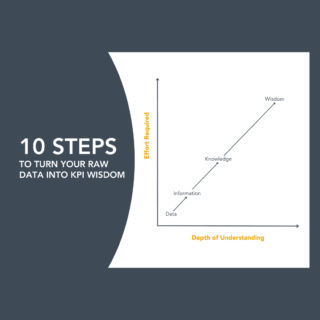When you look at your organization’s performance report is it bursting at the seams with measures that get responses like “Hmmmm, that’s interesting” or “So What! What does counting that tell me?” Perhaps the report is more likely to be ignored than read at all. Why does this happen? Often it’s because the report has measures that have just always been included, or it has measures that a funder wanted, or because it’s because reporting some measures is better than reporting nothing at all.
Irrespective of why, this is for certain: if a measure is not informing a decision or choice, it’s wasting space, time, and most certainly money.
So how do you start moving from measuring what’s easy to measuring what matters?
Here are 4 easy tips (or micro-actions) that you can use right now, without permission or budget, to move to measures you need:
- Start asking report-users which measures or pages they always look at first, and why. Chances are their attention will go to what matters most.
- Similarly, ask report-users which measures they virtually never look at or never use to inform their decision making. Listen for whether they use the word “interesting” versus “useful” when describing the measure.
- Then, ask report-users what in the report they do use to inform or assist in decision-making. I bet it’s a question they’ve never asked themselves. By asking, you’re giving them the opportunity to become more conscious about what information they do need to make evidence-based decisions.
- Start removing the measures that report-users rarely look at or say is “just interesting”. I wouldn’t ask their permission if you don’t have to, as their reactions will tell you if the measure needs to be there. Often people don’t notice or miss what they don’t value.
If you are worried that report-users may freak if their reports change, then try producing two versions of the report next month. Keep one report the same as users are used to, and produce a pared-down version without the least valued measures or information. Give them the latter first, and only use the original version as a backup, just-in-case.
Hopefully, these tips start the bigger conversation of how your organization can develop performance measures or KPIs that have more value and help you make decisions.



